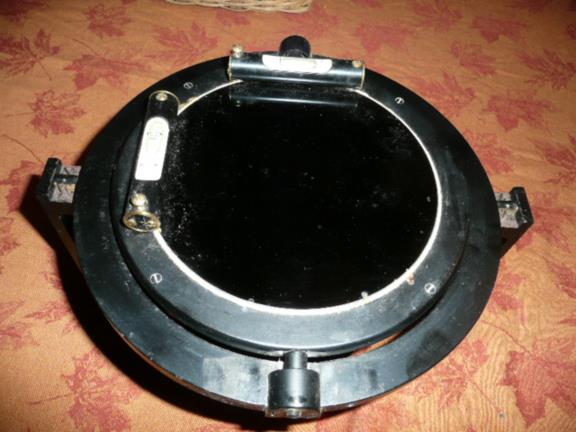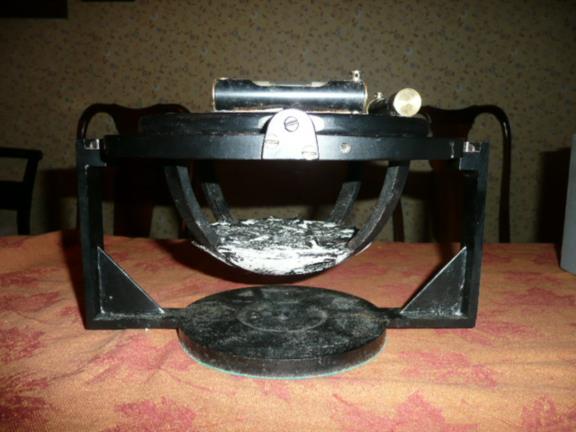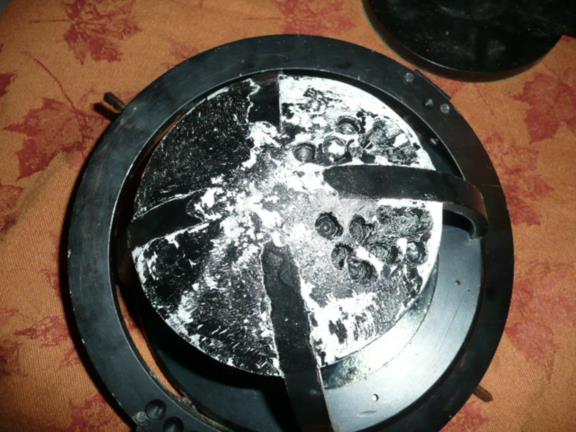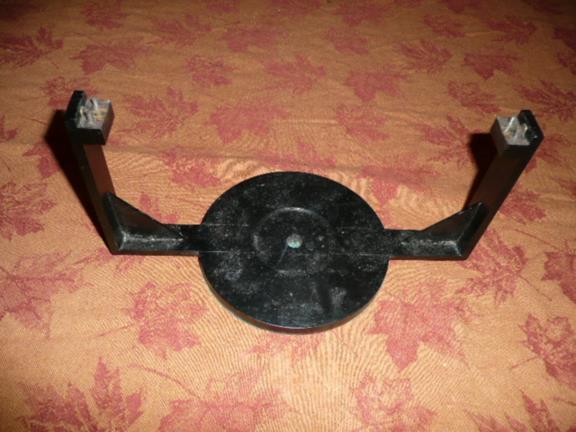
NavList:
A Community Devoted to the Preservation and Practice of Celestial Navigation and Other Methods of Traditional Wayfinding
Another artificial horizon
From: Stan K
Date: 2014 Jan 1, 17:46 -0500
From: Stan K
Date: 2014 Jan 1, 17:46 -0500
I originally sent this message in November 2012, expecting it to elicit much discussion. Instead, there was only one response, and that was four months later, so I suspect something went wrong. Since there has been much discussion on artificial horizons recently, I thought I would try again to drum up some "business".
Stan
--------------------------------------------------------------------------------------------------------------------------------------------------------------------------------------------------------------------
Since there has been some discussion of artificial horizons lately, I thought I would show one that someone, I don't know who, put a lot of effort into.
The first photo shows a top view. The outer diameter is nine inches. The left and right pivots are knife edges resting on flat surfaces. The top and bottom pivots are knife edges in grooves. There is a bubble level for each axis. The reflecting surface is black glass.
The second photo shows a side view, where the lead weight, which has lost some of its black paint, can be seen. It weighs more than I do. It also shows the stand.
The third photo shows the case. Blocks in the lid prevent movement during transport.
The fourth photo shows the lead weight. It can be seen that coarse leveling was done by drilling out some of the lead.
The fifth photo shows the stand alone.
The sixth photo shows the device in its case. In the lower right corner you can see an Allen wrench. Fine leveling is done with four Allen screws around the periphery of the circles, two for each axis. Once it is leveled there should be no reason to play with these adjustments again.
If you start the axes rocking, they take a good ten minutes or more to settle, so the leveling works nicely if you stabilize manually, but it needs to be sheltered from the wind.
Stan
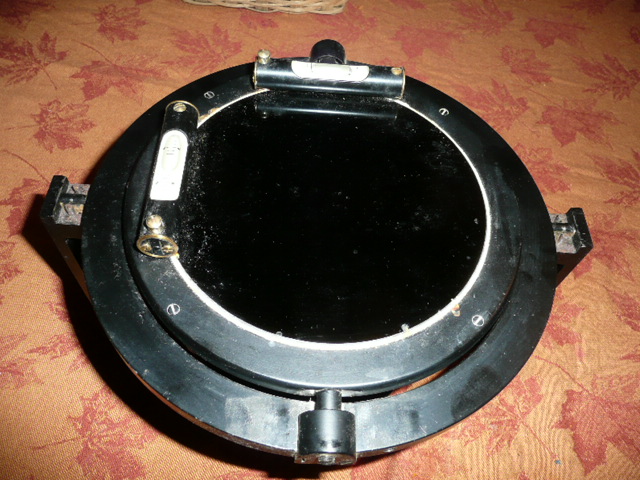
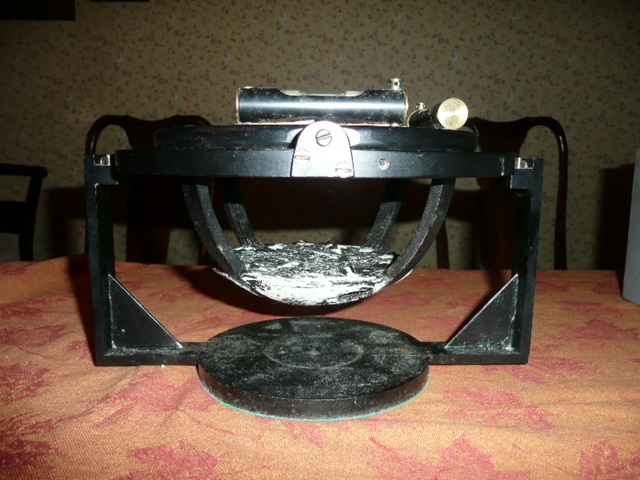
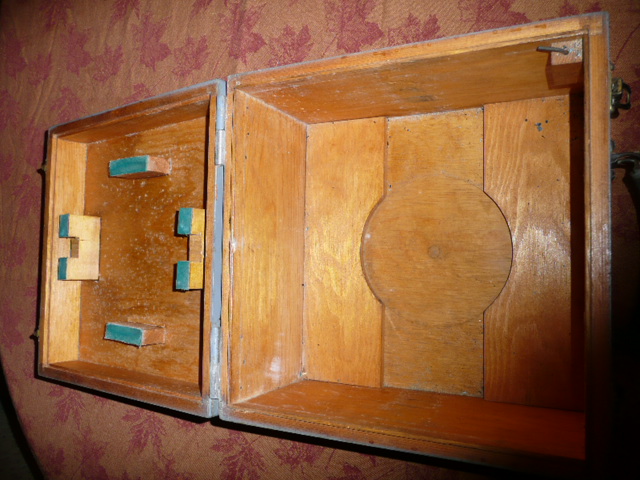
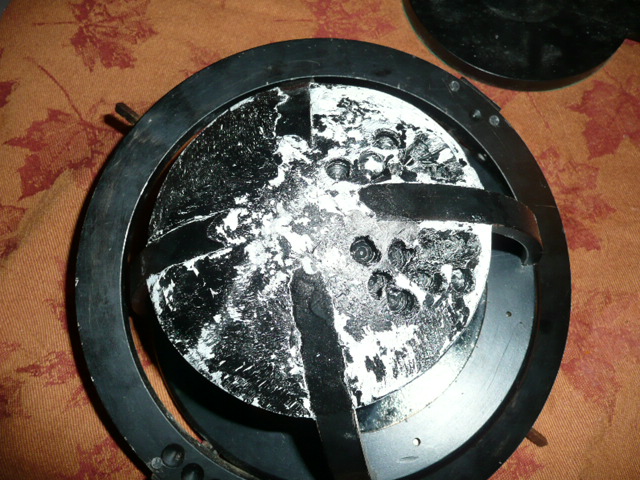

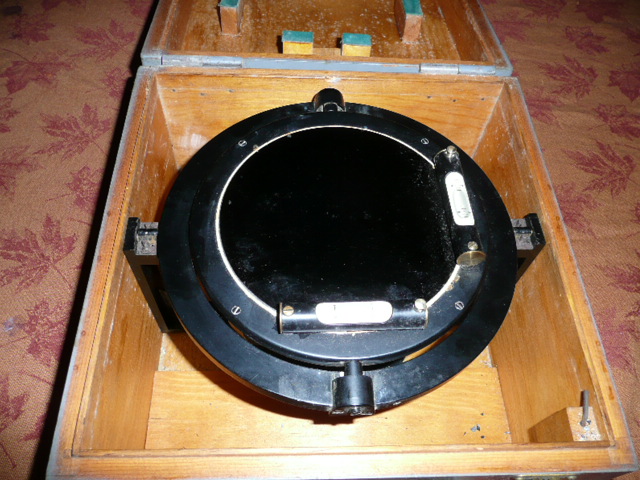
Stan
--------------------------------------------------------------------------------------------------------------------------------------------------------------------------------------------------------------------
Since there has been some discussion of artificial horizons lately, I thought I would show one that someone, I don't know who, put a lot of effort into.
The first photo shows a top view. The outer diameter is nine inches. The left and right pivots are knife edges resting on flat surfaces. The top and bottom pivots are knife edges in grooves. There is a bubble level for each axis. The reflecting surface is black glass.
The second photo shows a side view, where the lead weight, which has lost some of its black paint, can be seen. It weighs more than I do. It also shows the stand.
The third photo shows the case. Blocks in the lid prevent movement during transport.
The fourth photo shows the lead weight. It can be seen that coarse leveling was done by drilling out some of the lead.
The fifth photo shows the stand alone.
The sixth photo shows the device in its case. In the lower right corner you can see an Allen wrench. Fine leveling is done with four Allen screws around the periphery of the circles, two for each axis. Once it is leveled there should be no reason to play with these adjustments again.
If you start the axes rocking, they take a good ten minutes or more to settle, so the leveling works nicely if you stabilize manually, but it needs to be sheltered from the wind.
Stan
